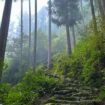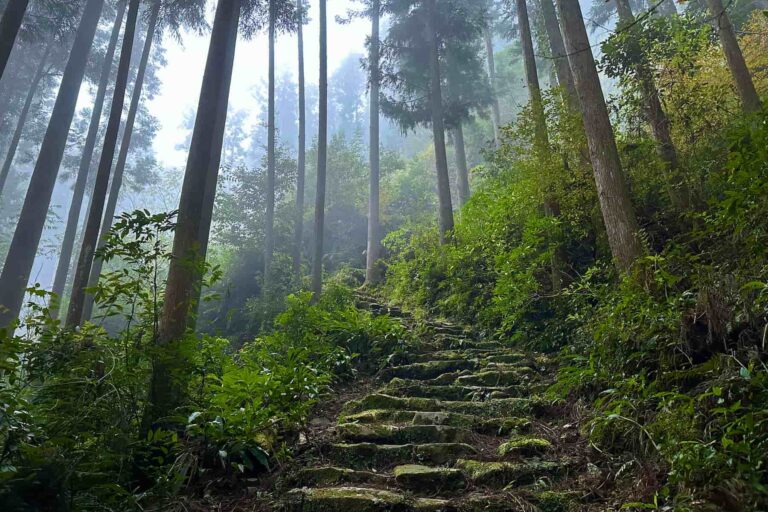
Go World Travel is reader-supported and may earn a commission from purchases made through links in this piece.
The Kumano Kodo Trail is actually a network of trails in the remote, mountainous Kii Peninsula, southeast of Osaka and Kyoto. The trails, which were established as Buddhist pilgrimage routes in the 10th Century, connect several sacred sites, collectively designated a UNESCO World Heritage Site.
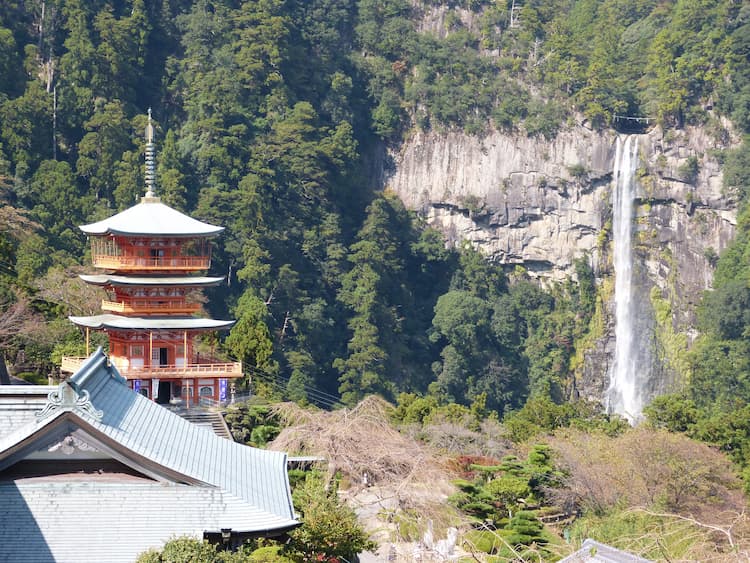
Planning a last-minute trip to Japan?
Top Experiences and Tours in Japan:
- See the sights with a tour of Tokyo: Full-Day Private Tour with Nationally-Licensed Guide
- See Mount Fuji on the Private Full Day Sightseeing Tour to Mount Fuji and Hakone
- Explore more with this tour of Tokyo Half-Day Private Tour with Government-Licensed Guide
Where to stay in Japan:
- Find accommodation with Booking.com
- Find your dream apartment in Japan with Agoda
- Find a hostel in Japan with Hostelworld
On The Trail
Physical hardship is key to the spiritual experience of hiking the trail. It only took a few minutes on the trail to grasp what that meant. I figure that these trails were established before the switchback was invented.
Instead of walking gradually uphill on a series of gently sloping switchbacks, my wife and I were either trudging up or carefully picking our way down long pathways or steep staircases of high, uneven steps.
All I could think about as I panted up the trail was that I should have spent more time on the glute machine in the gym.
The reward? Silence, serenity, and seclusion. We walked through green, sun-dappled tunnels formed by tall ancient cedars, broken up by occasional peek-a-boo views of distant ridges, valleys, and quaint villages.
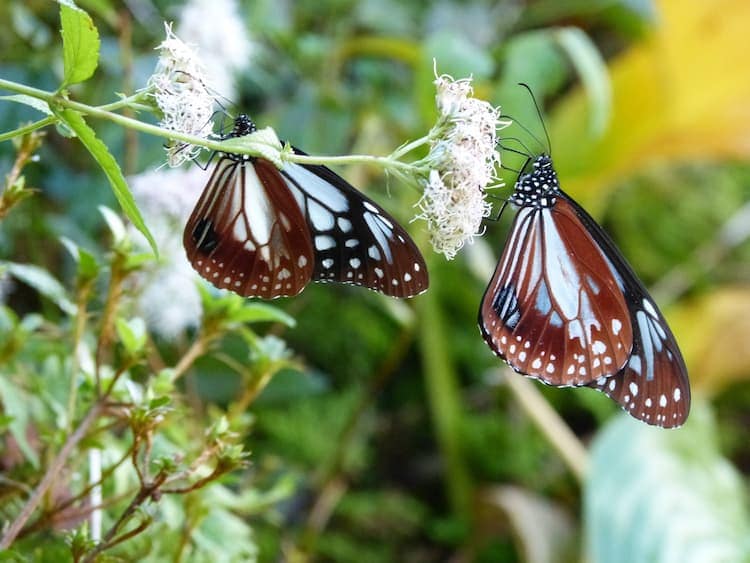
The trail was relatively easy to follow, especially with the detailed trail notes provided by Oku Japan (www.okujapan.com), the tour operator that hosted us on this self-guided trip.
At the end of the day, we slid into baths at the local Japanese-style inns where we stayed.
The baths soothed my aching muscles and joints and the elaborate dinners served in the inns — featuring sashimi, pickled vegetables, tofu and God knows what else – replenished my depleted reserves of energy just enough to get my body off the floor each morning (literally – we slept in futons on tatami mat floors most nights) and trudge uphill once again into the mountains.
On some days we had to take local buses to the trailheads. At first, trying to figure out fares, stops, and appropriate behavior was a bit intimidating. But it didn’t take long to decipher the system, which was as efficient as Japan’s legendary rail and subway systems.
This experience, which can be difficult or even overwhelming in other places, offered an intimate immersion in the pace and texture of everyday life in rural Japan, a welcome counterpoint to the hustle and bustle of Tokyo and Kyoto, where we stayed before and after the trip.
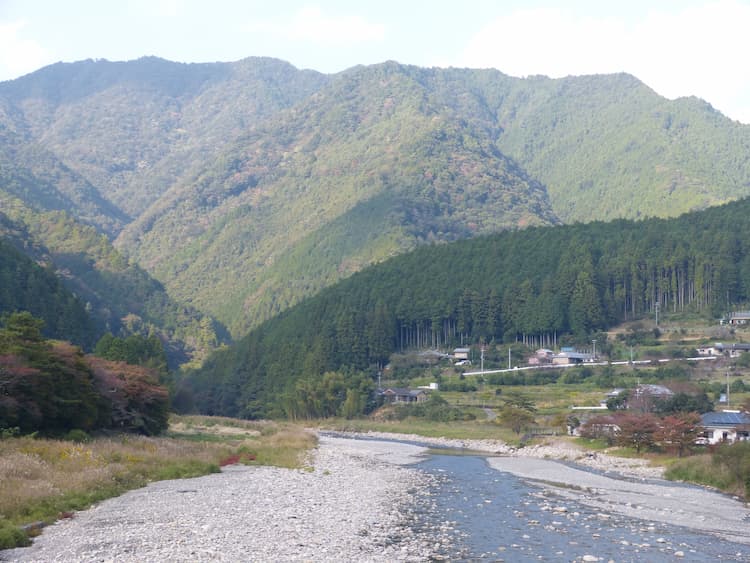
Best Tips & Tools to Plan Your Trip
Sacred Shrines
Our days on the trail were bookended by visits to two of the most important shrines in Japan. Mount Koya is a special place in the spiritual history of Japan.
Since the 9th Century, when the monk Kobo Daishi founded the first temple on the mountain and established the Shingon sect of Buddhism, devout Japanese have started their religious pilgrimages with visits to Mount Koya. The setting of steep hills covered with majestic cedars added to the spiritual sense of place.
We spent our one night in Koya at the Saizenin Monastery, a complex of simple, serene, and elegant buildings and gardens, an exemplar of Zen design. As soon as we arrived at the monastery, I sat back and relaxed …. sort of.
First, there is no sitting back in a Japanese monastery. The thin cushions on the floor have no back rests, making it impossible for me to slouch and lounge, my default position for kicking back and relaxing.
Second, I just didn’t know how to act. I am large and loud and can be a bit of a bull in a china shop. And we were the only gaijin in the place. So, behaving in a way that wouldn’t attract too much attention was a real challenge for me.
The simplest acts, ones I never think about when I’m home, required a Zen-like focus to get right, like using the right slippers and aligning them up properly outside the dining room and shared baths.
At some point I figured what the hell and just tried to be as unobtrusive as possible. Since they didn’t throw us out or even glare at us, I guess we did all right. Next time, though, I’ll know how to line up the slippers.
The hike ended in Nachi-san, the site of Nachi-Taisha, the most important shrine on the Kumano Kodo trail, and Nachi-taki, a spectacular waterfall over 400 feet high. For hours we explored the magnificent complex of temples spread up the side of a mountain.
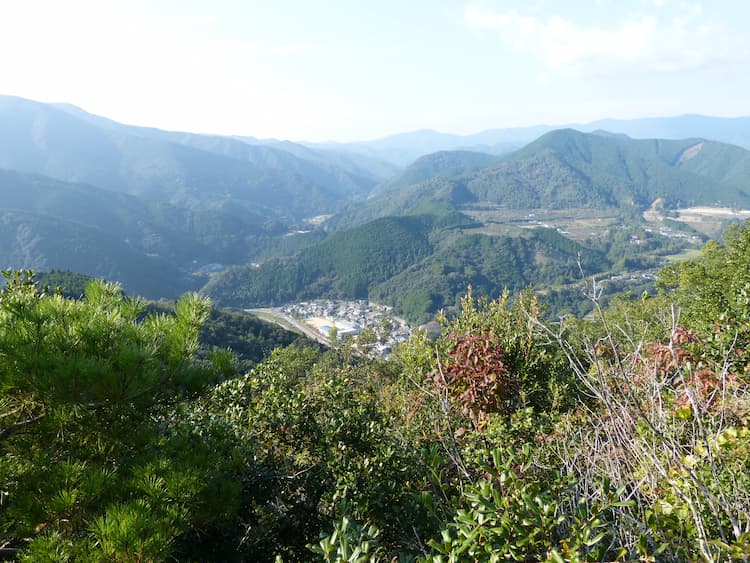
We climbed real stairs — instead of the rocks, roots, and timber steps on the trail – that weaved in and out among the temples. The stairs were steep and long, so we got plenty of exercise, but we stopped whenever we wanted to soak up the atmosphere of the place and linger over the views.
The next morning, we took a local bus to the nearby port town of Kii-Katsuura to catch two trains to Tokyo, including the legendary “bullet train”. We had time to explore the dock, eat fresh sashimi, and make friends with a bunch of local guys about our age.
They understood just a few words of English, and we understood even less Japanese, but we managed to share a few laughs and a large plate of sushi, their treat.
They were typical of the people we met throughout our visit to Japan – friendly, good-natured, helpful, and generous – and nothing at all like the reserved, distant stereotypes we expected. We went to Japan for the sites, the history, and the food, but it was ultimately the people that really made the trip.
If You Go:
Getting There
Round trip, one-stop airfare from Los Angeles to Kansai airport (KIX), just outside of Osaka, the closest major international airport to the trail, is about $1100 on Japan Airlines or ANA.
Where to Stay
If you book this trip through OKU Japan, they will arrange all accommodations on the trail. On our recent trip to Osaka, we stayed at the conveniently located Hotel Monterey Grasmere Osaka.
Rooms start at about $150/night. Another option is the nearby Agora Place Osaka Namba where rooms are about $110 for a standard double.
Where to Eat
All meals on the trail were provided by the inns where we stayed. In Kyoto, our favorite restaurant was Kappa Gion, a tiny izakaya in the middle of Gion, the main shopping, dining, and tourist district in Kyoto.
For more Information
Contact Oku Japan (www.okujapan.com)
(For more information and photos, including from Don’s stops in Kyoto and Tokyo before and after the Kumano Kodo Trail, see the blog on his website, www.adventuretransformations.com)
Inspire your next adventure with our articles below:
Author Bio: Don is an award-winning travel writer. After a 40+ year career as an organizational psychologist, consultant, and academic, he transitioned to travel writing with the publication of his National Geographic book, Riding the Hulahula to the Arctic Ocean: Fifty Extraordinary Adventures for the Seasoned Traveler (with Shannon Stowell, 2008). The Wall Street Journal called this book, “ One of the best travel books to cross our desk this year…A wonderful – and inspiring – read.” Don specializes in writing about transformational travel and adventure travel for 60+ travelers
- Exploring the Culture and History in Fascinating Astana, Kazakhstan - July 24, 2024
- Breakers & Beyond: Top 10 Things To Do in Newport, Rhode Island - July 23, 2024
- Laid-Back Lombok: Coconut, Coffee and Coral Reefs - July 22, 2024

